Welcome to the Municipality of Nafplion, where the rich cultural heritage of the city is revived through its public and private museums,
Start your tour from the public museums, where you will discover important exhibits that tell the history of the city, from antiquity to the present day. Visit the Archaeological Museum for a dive into the past or the Museum of Komboloi for an introduction to local tradition.
Then explore the private museums, where the personal touch of the owners creates a unique atmosphere. Here you’ll find collections dedicated to specific areas of art and history that you won’t find elsewhere.
A visit to the museums of Nafplio is an ultimate cultural experience, combining history with art and tradition. It is an invitation to get to know the rich heritage of Nafplio and immerse yourself in its magic.
Archaeological Museum
The Archaeological Museum is accommodated in the imposing in size as well as strict in symmetry, stone-built Venetian structure which covers and encases the central, Syntagma Square on its west side. It was first built in 1713, during the second reign of the Venetians, under the Naval Proveditore Augustine Sagredo to be used as the navy’s depository, according to the marble inscription fitted on the building’s frontage, written in Latin. It is widely acknowledged as one of the best well-preserved Venetian structures in the whole of Greece.
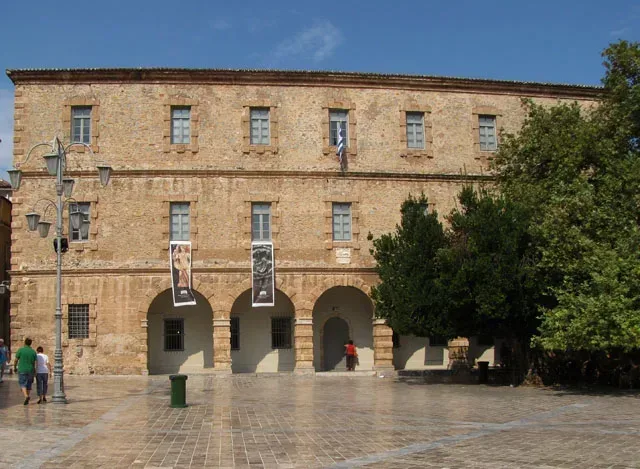
The permanent exhibition spreads along two halls of the same facade, within the building’s two floors and is then historically divided into several themes, from the remotest pre-historical exhibit to the period of antiquity, demonstrating the walk and the mark of every civilization setting foot in Argolida Prefecture.
The exhibit regarded the remotest in history here, is a Paleolithic cluster of altars (hearths) from the “Klisouras” gorge rocks or boulders in Prosymna. (32.000-21.000 BC).
The findings of the cave “Fragthi” in Ermionida attest to the transition from hunter-gatherer to productive economy.
Also, the exhibition presents stone and bone utility tools, shells and bones of animals and fish, jewelry made of shells, bones or stone, the first Neolithic pot-made jugs-vases along with a number of figurines resembling humans and animals, made of clay as well.
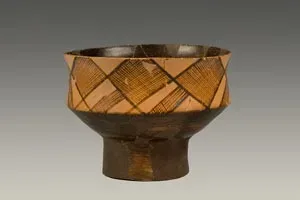
The early period of the Bronze Age or Early Helladic period (3300-2100\2000 BC) is represented with exhibits from regions such as, Tirynth, Assini, Berbati, and Ancient Epidaurus. Representative of the period’s pottery is also demonstrated through seals made of stone, clay or bronze, clay sealing-tops, bone-made tools, Early-Cycladic marble figurines, a clay made hearth from Berbati region. Among them, distinctive as well as unique boasts the Tirynth cooler.
Jugs, vessels and other artifices determine the Middle Helladic Period ( 2100\2000-1600 BC) from the settlements of Assini, “Pronoia” (settlement in Nafplio), Midea, Tirynth and Berbati of that period; one which was the herald, the precursor, the solid ground upon which the Mycenaean civilization would lay its foundation.
The administrative edifice of the great Mycenaean Palace is depicted through findings excavated in major centers, namely in that of Tirynth, Midea and Assini, each one under the influence of Mycenae. Distinction can be offered to worshipping tools and figurines, some of which are the impressive, paddle-steamer female figurines from both Tirynth and Midea as well as the great “Lord of Assini”, Linear B signs, storage amphorae (urns), workshop remainders ( casts, moulds, semi or unprocessed precious stones, half-finished artifices) together with cylindrical seal-tops, a copper-made talent (coin), pieces out of amber, faience, alabaster; all indicative of the trading channel Mycenae seemed to relish.
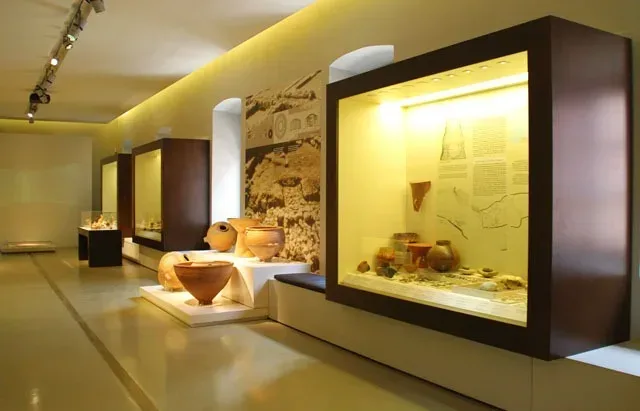
Following, traces and findings appear in the museum, originating from the chambers of the tombs of places such as “Church of Annunciation” in Nafplio, Assini region, Dendra village, Ancient Epidaurus place, as well as from the domed forehead of “Kazarmas”. Stone, metal and clay vessels, ivory figurines, signets, jewels made of gold, semi-precious gems, amber, faience, glass, all enlightening to the burial practices, all pinpointing to the societal status quo and classism of the period. Amphorae-like craters (used to mix wine with water) are indeed eye-catching, painted with lifelike images of a chariot and a guitarist, and a longer jug, called “kalathos” or drinking-horn painted with a wild goat from the region of “Annunciation” in Nafplio town.
The museum’s most exquisite piece of archaeological finds still remains to be the Bronze Suit Armor of Dendra region, exhibited in a specially designed area together with the rest of the breathtaking tools which were excavated such as, armor equipment belonging to the soldier dressed in that armor, bronze and clay jugs.
In the hall of the second floor presentation begins with the material remains of the Iron Age. Prominently holds the bronze helmet of the famous tomb Tiryns (11th century BC.).
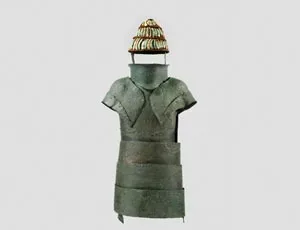
The Geometric or Homeric Era sketches itself through finds, burial tools from “Pronoia” zone, Nafplio, Tirynth, Assini and Berbati region. The horses and the horseman, perhaps of the most representative and finely designed work, does credit to the heroic aura of the time, while ceremonial drawings of dances, birds and animals compose the full picture drawn, to allow visitors to completely realize the Homeric years.
Worshipping and ritualistic practices of the time are greatly presented through findings in Tirynth. The goddess Hera and the goddess Athena seem to be adulated here. Tribute is being paid to the former through throne-set deities, a shield-bearer horse rider, micrographic vessels, flowers, seeds and wreaths. To the latter, rituals included bronze helmet and tibia covering effigies-models, as well as parts of craters of the 5th century BC, with dedicatory signs to the goddess. Attracted will the eye be by the clay-made donated shields depicting mythological settings as well as the 7th century BC clay-made ritualistic masquerades, found in a place called “Vothros” of Tiryns (or Tirynth) and the copper-made “Kouros” from the region of “Kefalari” outside Argos (560-540 BC).
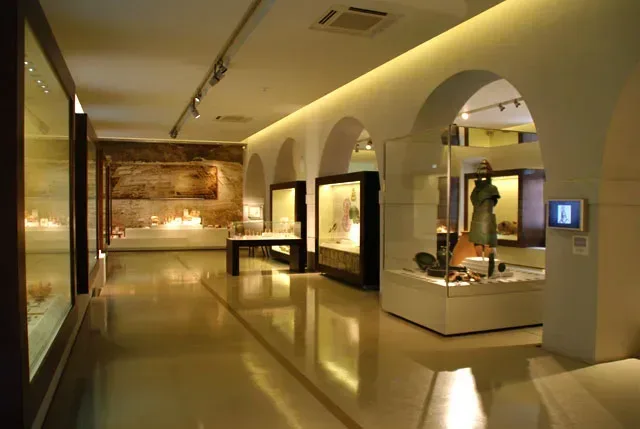
The thematic unit of Ancient Epidaurus, Ermioni, Alieon region, and Ancient Assini follows the course of the museum, exhibiting clay and glass vessels, figurines, gold jewelry, bronze mirrors and utensils; all depicting life and death scenes in those ancient citadels. The bronze-made statuette of a maiden (around 600BC) from Artemis sanctuary in Anc. Epidaurus stands imposing together with the Karyatides style bronze mirror (490-470 BC) from the city of Ermionis and the rusty incorporated three piece iron keys from Apollon sanctuary in Alieon region.
The tour is completed with the demonstration of a “Pyrgouthi”, Berbati region homestead (6th century BC), whereby tools and utensils are being presented, related to wine- production and other agrarian tasks of the region’s inhabitants.
The archaeological exhibition comes to its end with the donations to the Museum. Figurines and jugs from Attica, Viotia and Corinth are proudly revealed, gifted by collectors-donors of Glymenopoulou, Potamianou, Archbishop Nikandrou, Thermogianni families.
Prestigious among others stands the pan-athenian amphora, work of the Painter of Mastos (530-520 BC). The tragic scene of the assassination of Clytemnestra by her son, Orestes is shadowed on the surface of a red shaped, Attican urn-jug (around around 440BC). A “skyphos” or cup from Viotia region,red figured Caberian, sketches a parody of the renowned fable of Odysseus’s accommodation to Circe’s palace. (425-400 BC).
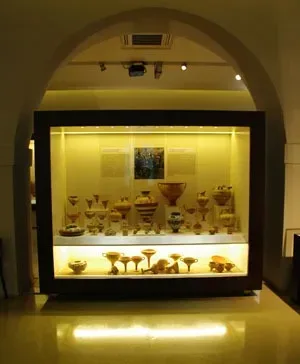
Evangelia Pappi
Archaeologist, D Conservation Unit for prehistoric And Classical Antiquity Items.
Indicative Exhibits
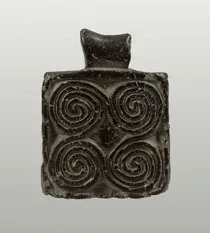
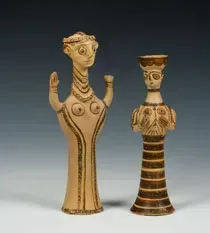

The museum also holds a wealth of educational-cultural programs for all age-groups. For more information, please contact our services on the following telephone number of the Museum.
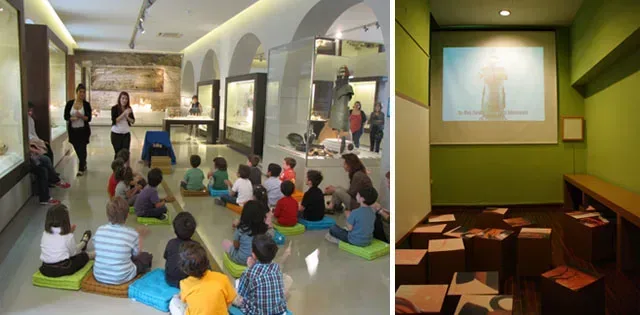
Geographical Coordinates
Syntagma Square, Nafplio
- Google Map
- 37.567028449669834, 22.797242495202013
- 2752027502
For more information: EFA. Argolida, Syntagma Square, Tel: +30 27520 27502 (ext. 6), e-mail: [email protected]
War Museum
War Museum of Athens
Nafplio Branch

Located in the area where the first Army Cadet School were, the War Museum was inaugurated at the end of 1988. (Amalias,22). The Museum is a directive of the history of the Army Cadet School and that of contemporary history of the Greek state, the participation of the citizens of Argolida prefecture in all rebellious acts, from the Greek Revolution against the Ottoman Empire to the liberation from the occupation troops.

Divided into two floors, the Museum follows a thematic presentation of the Greek state fightings and struggles.
In particular:
1st FLOOR:
A) Dedication to the First Governor of the free Greek State, Ioannis Kapodistrias
B) The city of Nafplion. The active involvement and participation of the city into the fires of the Greek Revolution, the soul of a rebellious wave, are all presented through very rare engravings, glorifying the city and its fortress walls.
C) The first School of Army Cadets was established under the name of “Central War School” by Ioannis Kapodistrias, an act to man the Infantry and Navy of the time. The school was operational from 1828 to 1834. Works of art, uniforms, weaponry and pictures fill up the mosaic of the time.
D) 1821-1897 Period: The fires of revolution have started sparking from Peloponnese in March 1821. The city of Argos, under Tsokris commander, the village of Koutsopodi with the “Nezaious”, the area of Kranidi with commander Papasernis alongside many citizens of Argolida, all in the front line of the battle for liberation. Palamidi castle and Anapli become freed from Staikopoulos and Kolokotronis, heroes of the Greek Revolution. “Dervenakia” region and “Miloi” region turn into major battle fields, decisive and glorious victories won there against the Turks and Ibrahim’s Egyptian troops.
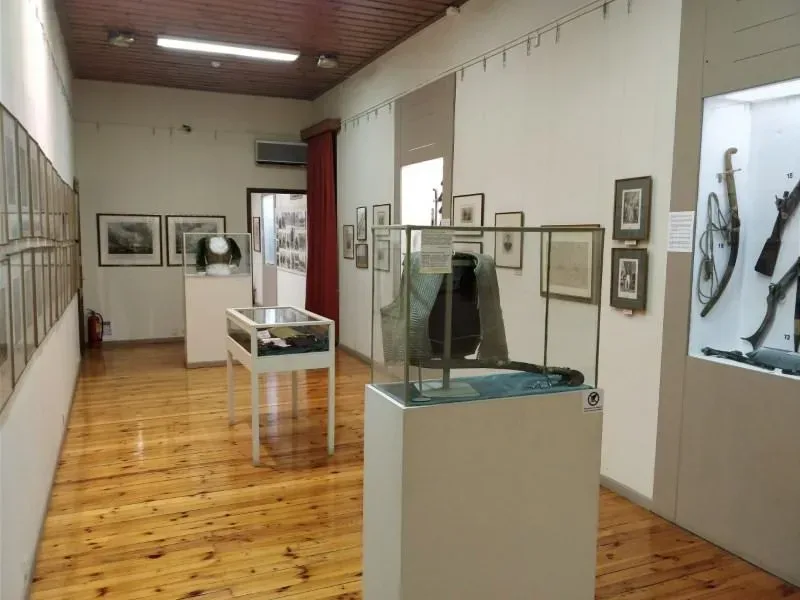
The governor Ioannis Kapodistrias establishes the very first independent Greek State. His assassination sharply and unfairly interrupts his work in September 1831. Two years later, Nafplio welcomes the enthronement of King Othonas and in 1834 the citizens of Nafplio get confronted with Theodoros Kolokotronis’ sentence to death. On December 1, 1834, the capital city of the Greek State changes from Nafplio to Athens. The prelude to Othonas’ dethronement is written with Nafplio rebellion (1/2/1862), sparked by Kalliopi Papalexopoulou, as the chief insurgent. Works of art, engravings, stone work, armory and generally, archive material do justice to the heroic way for freedom by the Greeks.
E) Macedonian War (1904-1908). A unique mosaic of the tribute paid to the honorable and gallant endeavors of the Greeks in Macedonia, to hold tight to, to retain their homelands, their religion and their history is depicted here. Argolida prefecture actively involves itself to the fires of combat, commanded by Sarantos Agapinos (Captain Agras), by K.Tsokalopoulos (Captain Rebelos) and more. The culmination of the War in Macedonia comes with the engagement of Pavlos Melas, whose heroic death summons all Greeks to the war, making the Macedonian War now, a Pan-Hellenic one. Again, works of art, stone work, retro photographs, armory and war spoils compose the notes played, revive all those instances and heroic acts of a newly-born free state to survive, flourish and run to the aid of its ‘brothers and sisters’ in Thessaly, Macedonia, Epirus, Thrace, Crete.
F) The Balkan Wars of 1912-1913. This is the battle to shaken the grounds of all Greeks. Victorious warfare and naval supremacy will compass Hellas to the liberation of Thessaloniki, the Aegean islands and Ioannina. The 8th Regiment in Nafplio participates under the commanding officer Ant. Kampanis. Once again, works of art, folklore stone works, photographs and plumage narrate the epic naval battles in the Aegean ,the “Evzones”, the “Mbizani”.
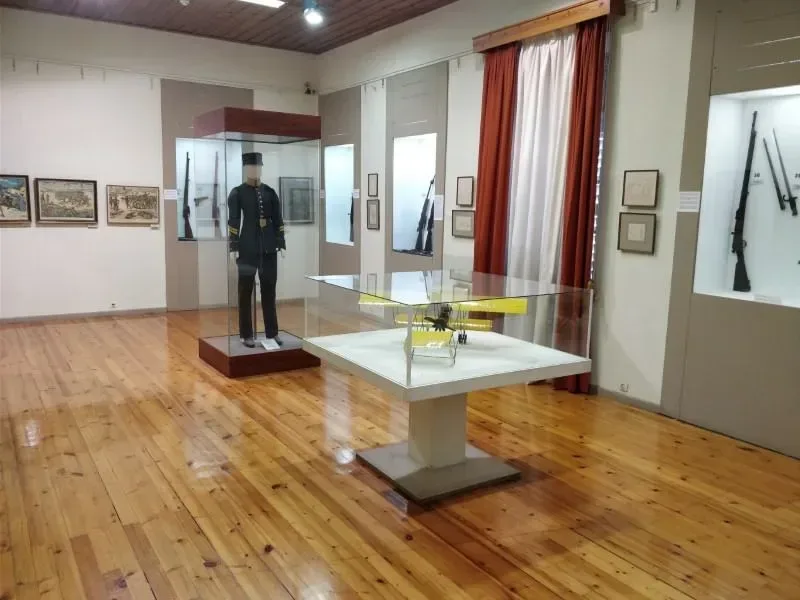
G) WWI. The murky face of global obliteration brings the Greeks to the sweaty and bleeding paths of battle-making, now triumphing with the Allies. Tribute is also paid here through stone work, armory, relics.
2nd FLOOR:
A) Greek- Italian War 1940-1941. October 28th, 1940. The fascist group declares war against the Greeks, who find themselves entrapped in the vortex of global obliteration, yet, around eight million fascist spears cannot bend their will. The enthusiastic wind will drive almost all Greeks to the epics of Pindos Mountain ranges battles. The outnumbered Greeks withstand the great fascist rage and counterattack. Argolida actively engages itself in battle baptism, with some well known captains in strategic points. The 8th Regiment of Nafplio liberates Argirokastro. Stone works, war relics, photos, plumage and gunnery disclose the surge of the time, the victories in warfare, and the hardships within.
B) The German Invasion 1941. April 6, 1941. Adolph Hitler comes in aid to his comrade, Italian commander Mussolini. The Germans raise their war flag to Greece and occupy it with their iron-built troops.
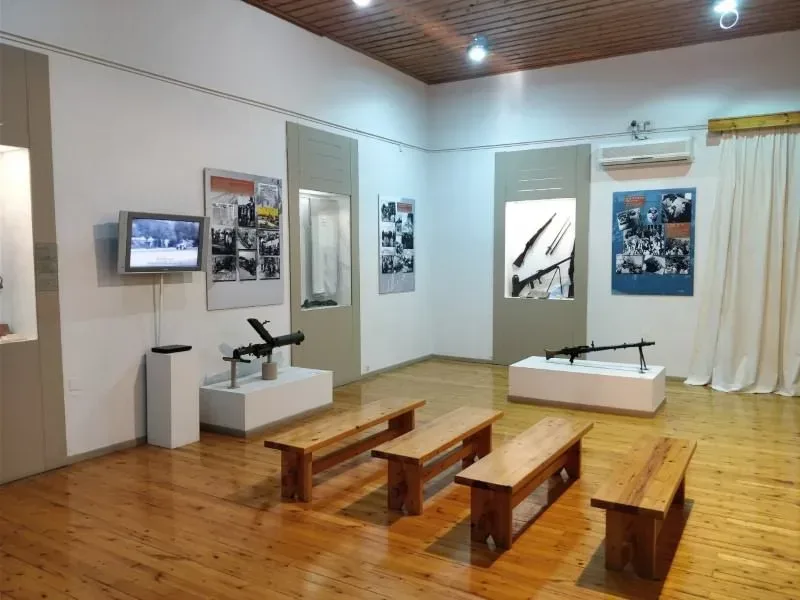
C) The War in Crete. On the 20th of May, 1941, German parachutists attempt to invade the island of Crete, however, to no avail. The Greeks together with the Cretans and forces from the Allies resist any occupation for eleven days, something that will enrage Hitler into full scale reprisals to the island. The Greeks will rise once again to their feet and withstand in the battles of Fortresses and Crete’s; two battles that delay the oppressor’s plans and possibly alter the global route of history in the making.
D) Occupation-Resistance: The occupation of the Greek state is now completed. The 1941-1942 winter season with all its hardships and sufferings bring the citizens to their knees. Nonetheless, what is sprung out of it is the period of Resistance, since valor, strength and hope is never lost. The Greeks massively oppose all executions and defeat the occupants. Relics of the time, photographic material and pieces of armory glorify and immortalize the heroic deeds of the Greeks.
E) After the country’s occupation, the Greek government finds refuge in Egypt. Middle East is now the focus of attention, where Greek military groups (the Hellenic military Navy and Aviation) fight side by side with the Allies in the battles of El Alamayne (1942), the military operations of North Africa (1942-1943), Italy (1944) and in the liberation of the Aegean islands (1944-1945).
F) Liberation. The military success that the Allies seem to relish, Hitler’s “Waterloo” ( utter ruination) on the east, the landing and triumph in Normandy and the Pacific dawn a new beginning and explain the end of the Axis powers. On October 12, 1944 the capital is made free. The people of Greece, after a nightmarish night with the occupants, welcome freedom in tears of joy and enthusiasm. Photographs, relics, plumage, all indicative of the dramatization of the times.
G) The Army Cadet School. Photographic material, medals of Honor, military costumes and more discuss and synthesize the works and status of the Military Academy, which was the breeding ground for many of Greece’s celebrated personalities.
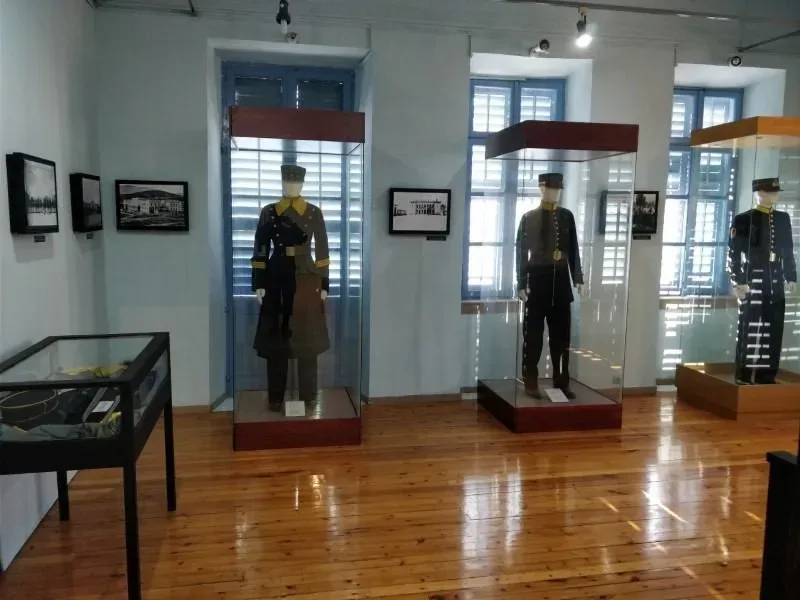
Geographical Coordinates
Ave. 22 Vasilissis Amalias Avenue, Nafplio 211 00
- Google Map
- 37.56625546454452, 22.79935285479759
- 2752025591
For more information: War Museum Nafplio Branch, e-mail: [email protected]
Folklore Museum “Vasileios Papantoniou”
The Peloponnesian Folklore Foundation “Vasileios Papantoniou” of public benefit was established back in 1974 and is located in Nafplio. Its primary aim is the research, study, demostration and conservation of the Hellenic cultural activity.
It is located on King Alexander’s 1 street and has been awarded with the European Museum of the Year Main Award (EMYA) in 1981.
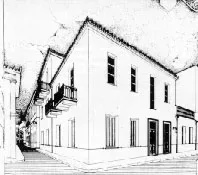
The year 1999 was the time that the Foundation celebrated its first quarter of the century birthday, in an unforgettable ceremony.
The newly presented exhibition “The Best of PFF” (Peloponnesian Folklore Foundation) aims at demonstrating the depth and wealth of the foundation’s collection, which numbers more than 27.000 different items.
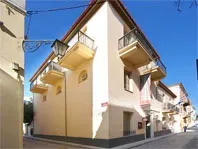
Since 2006, the exhibition entitled “Hellenic Urbanism: Nafplio 1822-1922” has opened its curtains in the already renovated interior of the foundation. Prepared to be a permanent exhibition, it mainly encompasses urban Nafplio and the peripheral regions.
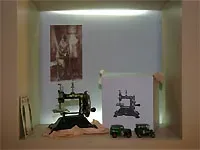
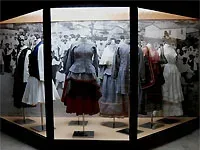

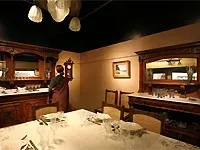
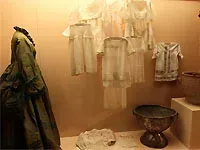
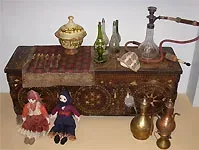
The ground floor stages heterogeneous or promiscuous museum items, which have been placed in a very bold and modern way, to stress the polymorphic attitude of the collection of the foundation. The above way was sporadically presented in Nafplio back in 1999 up to January 2006, and naturally in “Ptichosis” cultural demonstration for Olympic Games 2004.
Previous Exhibitions:
“From Nafplio to Nicosia. The collections of PFF”
Leventio State Museum, Nicosia October 2007- January 2008
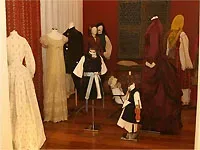
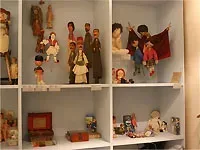
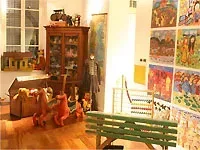
“The Act of Dressing”. For a museum on the culture of dressing-clothing
“Evagoras Lenitis Centre”, Lemessos 12.12.2007- 27.1.2008
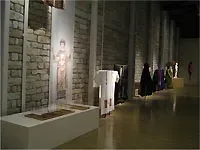
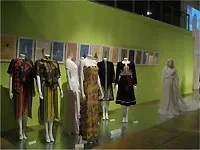
“Spells and Superstitions. Symbolism, incantations, amulets, the folklore contextual strength of magic”
This exhibition took place from September 25th to January 11th, 2010 under the auspices of “European Days Cultural Heritage” themed as: “Sorcerers, incantations and amulets, the perspective of magic in the archaic and Christian world”.
“Alice and Nestor Telloglion”
The PFF has graciously granted compilation items for the exhibition: “Alice and Nestor Telloglion”, in the spirit of cooperation and as a token of appreciation. The particular exhibition was created as a celebration for the completion of the 10th year from the inauguration of the “Telloglion Foundation”
Extra credit should be done to the contribution of Mrs. Ioanna Papantoniou, President of the PFF, for the support and aid provided, while the artistic administration was attended to by Mr. Stamatis Zannos.
The Museum’s shop operates on the ground floor.
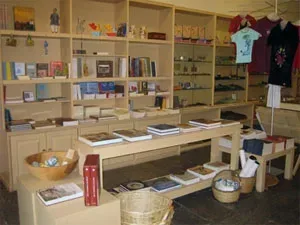
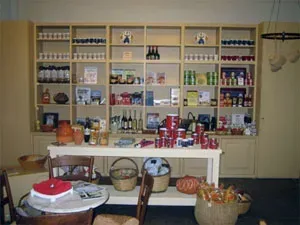
Geographical Coordinates
1 Vas. Alexandrou and Sofroni, Nafplio 211 00
- Google Map
- 37.56696620712802, 22.798941186506735
- 2752028947
For more information: Museum “B. For further information, please contact: [email protected].
National Gallery – Nafplio Branch
Under the management of Marina Lambraki-Plaka and with the initiative of the prominent citizen of Nafplio and ex-president of the State Audit Council, Apostolos Botsos, was the department of the Art Gallery in Nafplio founded in 2004. The building, a courtesy of the Municipality of Nafplio, was restored and equipped museum-like with the aid of the public welfare institution: “Alexandros S. Onasis”.
The neoclassical building where the gallery is held, houses a collection of works of art dedicated to the liberating cause of the Greeks against the Turks (Th. Vrizakis, F. Margaritis, Dion. Tsokos, N. Gyzis, Nik. Lytras and more) which underlines and provides the aesthetic element to the historic note of the city of Nafplio. The aim of this collection of paintings seeks to glorify the struggles of the Greeks and their ongoing yoke, extracting the realistic element of the cause and escalating them to the sphere of the idealistic.

“1821- Figures and Themes of the Greek Revolution”. The exhibition of the works of art is branched into five units, demonstrating historical facts, whose creation has been designed while the 19th century art movement was flourishing in Greece as well as in other parts of Europe. What seemed to arouse the imagination of the romantic creators of those fine pieces was the dramatization of a series of events, a continuum of the Greek revolt
The waging war against the Turks symbolized the clash between Culture and Savagery, the Holy Cross with the Crescent Moon, Freedom versus Oppression.
Most of the scenes serve to make the visitor get moved by, to stress the esoteric conflicts, the passion and the overflowing emotional waves of the oppressed, to teach and guide the viewer into the element of emulation.
There is no denying that the events are molded in a moralistic attitude which helps to intensify the moment and transport the viewer into the very tragedy of the protagonists.
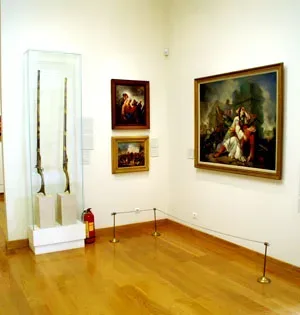
In a better understanding of the paintings, there are also sculpted items of everyday use and armory of the fighters which complete the jigsaw puzzle of the exhibition proving at the same time the breadth of popularity of the thematic paintings of the Greek War of Independence.
Sample works:
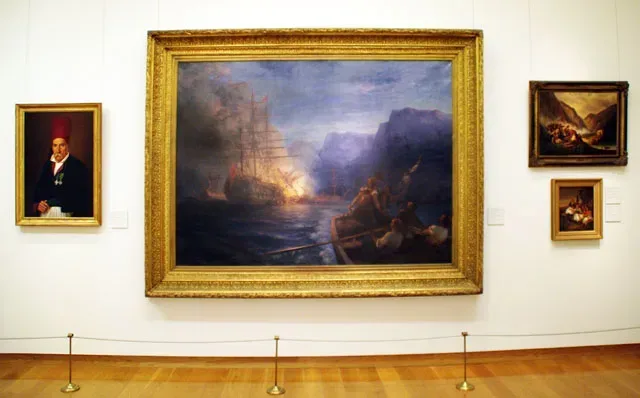
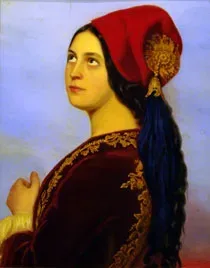
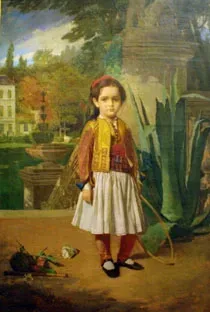

The Department of the National Art Gallery also houses a number of albums and art books alongside a hall for short-term exhibitions, offering the museum the dynamics and the attraction needed to define its functionality.
There are also some educational programs which address pupils of the schools of the prefecture as well as an art workshop for children.
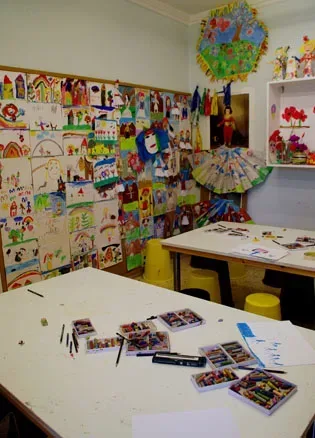
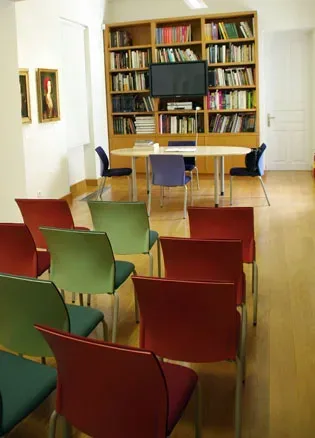
May 2004-September 2005:
The Gallery opened its gates to an engraving exhibition, which displayed the history of Nafplio from the 16th to the 19th century. The title of the exhibition was: Nafplio in European Engraving, 16th-19th century, Ioannis Fotopoulos family collection.
From September the 30th of 2006 to July the 16th, the public was presented with: The authentic figures of the 1821 Greek Revolt, by Karl Krazeisen, 1826-1831, with all the drafts, aquarelles, lithography.
July 29th- November 30th , 2006: Atribute to “Simeon Savvidis”
From December 18th to May 30th, the cycle of life was displayed in the hall for short term exhibitions of the National Gallery Museum, featuring 24 works of art by Georgios Iakovidis.
June 14th – October 28th , 2007: ” Correspondence. Flowers from contemporary Greek art.” In cooperation with Alpha Bank.
December 2007- September 2008: The Museum houses an exhibition, which is only a fraction of the newly-arrived pieces acquired by the management of the museum, Mrs Marina Lambraki-Plaka, an effort which lasted from 1992 to 2007, an astounding number of 3,000 pieces of art.
September 27th, 2008: the Department of the Museum of Art Gallery in cooperation with Al. Soutzou Museum inaugurated an exhibition in remembrance of Ioannis Kapodistrias, entitled: “Ioannis Kapodistrias, The protomartyr of New Hellas” aiding in that way to the celebrations held by the Municipality of Nafplio and “Ioannis Kapodistrias” Intellectual Centre, for the 180 years of the declaration of Nafplio as the first capital of Greece and the arrival of the first governor of Greece.
March 23rd – May 10th: The exhibition on display focuses on: “General Makrygiannis and the Presentation of the war”, which aligns with Fred Boissonas innovative and ingenious lithography work. His work reproduces 24 aquarelles of Demetrios Zografos, which are originally placed in Gennadeios Library.
This time of the year (June 2011) the Gallery honors the works of Panayiotis Tetsis, an academic and distinguished artist, presenting sample pieces of the vast units-motifs that he has been occupied with.
Lambrini Karakourti- Orfanopoulou
Art Historian- National Gallery
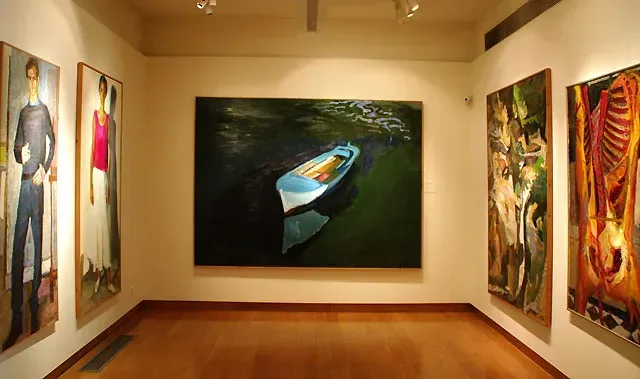
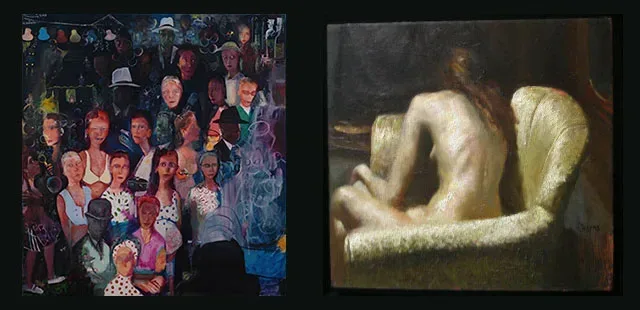
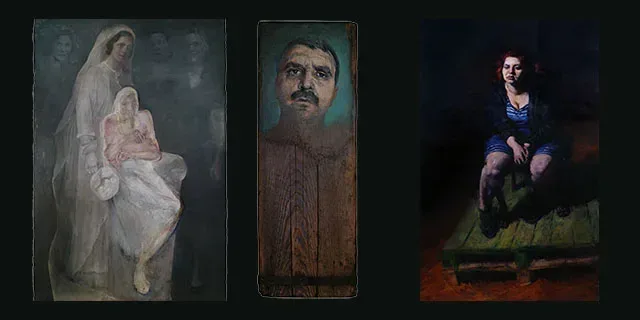
Geographical Coordinates
Sidiras Merarchias 23, Nafplio
- Google Map
- 37.567204014765295, 22.806400348075186
- 2752021915
Child Awareness Museum “Stathmos”
Since its “birth”, the PFF has had a particular, vested interest on the approach: “Child-Museum”. It is the very first institution to materialize such a goal and has been influential in a way, in motivating other institutions across Greece to act the same.
In 1982, it assembled the first teaching community conference, with the aim to sensitizing and activating an educational program which would redefine the relationship between the child and the Museum, which were very successful. Thus, in cooperation with the Local Authority, the PFF managed to create a lifeline so to speak, through “Child Awareness Museum”, in continuation of its approach.

After an extensive research on Child Museums across the European continent, the first museum for children was established, in 1989, under the theme: “Τhe child and the cycle of child age”, from antiquity to our contemporary era, after the successful, seasonal exhibitions that had taken place in Nafplio and Athens, entitled: “Τhe child and the game”. Primary aim was to put a new concept forward, to redefine the approach children have for museums, with its axis pointing to three directions: aesthetics, psychology and sociology.
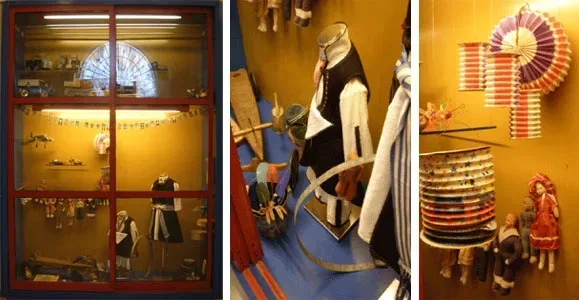
Stathmos-Educational programs
PFF’s educational courses have been initiated since 1979 and address home students, schools and team groups from all over Greece. The exhibits on display are in a way magical but at the same time silent. The course’s main aim is, through entertaining and game-play means arousing senses and interests, to break off the silence and to the extent that it can be made possible to counter-argue the stereotypical and lifeless concept that people and especially children have concerning museum sightseeing.
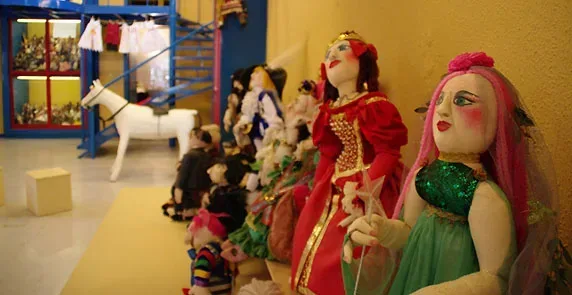
The educational basis for such a reverse follows: a) the theoretical, empirical method which can be accomplished via supervisory material (audio-visual material, museum-devices, and documents) and b) the child’s self action.
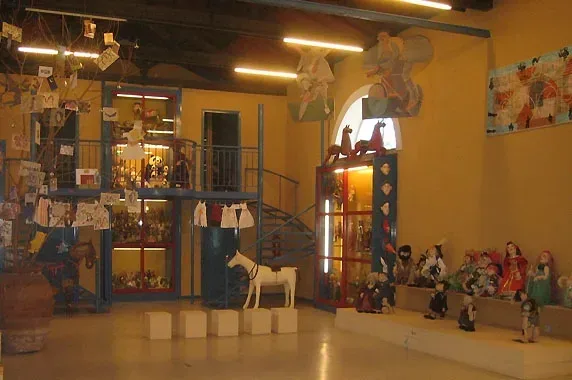
School Educational Programs:
– Nursery school- Kindergarden
1) Textile-Cut-Attire
2) The olive grove ghost
3) The spider’s web
4) The doll
– Primary School
1) Textile-Cut-Attire
2) 19th century Nafplio
3) Museum-routes-memory
4) The olive grove ghost
5) Child age Museum. Learn More
6) The olive game
7) The spider’s web
8) Our folklore music through shadow theatre
9) The doll
Secondary School- High School
1) 19th century Nafplio
2) Modern Greek shirt
3) Museum-routes-memory
4) “Stathmos-Memory
5) Overgrown with olive trees
Educational Courses for the city’s children
1) Theatre workshop 2) From the Museum to the book
Courses for the disabled
The PFF Department of Educational programming has cooperated with the Centre for Advisement-Occupational Orientation (KESYP in Greek) towards the publication of an educational book themed around “Vasilios Papantoniou” Museum for all Schools with Disabled and Special students of Argolida prefecture.
The educational file “Let’s take a walk to the Museum” can be applied to all Schools for Disabled students across the Greek State.

Courses for Adults
The PFF has inaugurated the pilot application of educational activities for adults in cooperation with: a) The PFF’s “Friends” Society and b) the parents of the children who attend the PFF’s programs, some of which are:
1) The art of the mosaic
2) The art of clay
3) My mother is prettier
4) Museum’s telltales. Aunt Briseis and other narrations.

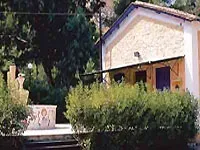

Geographical Coordinates
Vas. Konstantinou 31, Nafplio 211 00
- Google Map
- 37.56574189179286, 22.80633575547136
- 2752028947
For more information: Museum of Childhood “The Station”, e-mail: [email protected]
Komboloi Museum
In April 1998, the first Komboloi (Worrybead) Museum – so far the only one in the world – was founded in Nafplio by Aris Evangelinos and Rallou Gromitsari, who have been collecting and studying the komboloi since 1970′. Mr. Evangelinos’ grandfather lived in Alexandria of Egypt, from whom they took their first lessons and learned the ‘secrets’ of the Komboloi.
They start their journey on the “roads of komboloi” in 1963, a journey still continuing till today. They collect knowledge along with rare old strings of beads (kombolois and prayer beads) from all over the world- from Hinduists, Buddhists, Muslims, Catholics and Greeks- from countries where the Greek nation prospered. Thus, they have acquired a unique collection part of which is exhibited at the Museum (upper floor). The exhibited string of beads date approximately between 1550 and 1950.
This unique collection is placed in four halls, following a historic root:
A: Hindu, Buddhist and Muslim Prayer beads
B: Christian Orthodox and Catholic Prayer beads
C&D: Greek Kombolois (Worry beads)
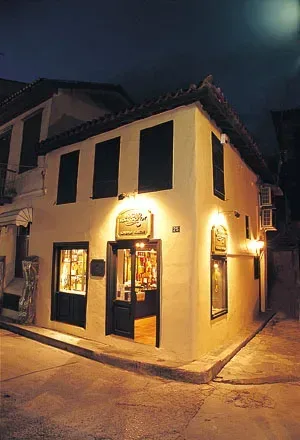
The Museum has hosted more than 350.000 visitors since its opening.The Komboloi Museum is accommodated in a privately-owned two-storey building in the old city of Nafplion, at 25 Staikopoulou street.
The exhibition halls (museum) are situated on the upper floor.
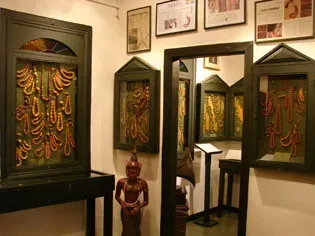

The Museum Workshop is on the ground floor. Its purpose is to conserve the old strings of beads and also produce exact replicas of the ones exhibited at the museum. The conservation of old strings of beads, which are family heirloom, is free of charge.
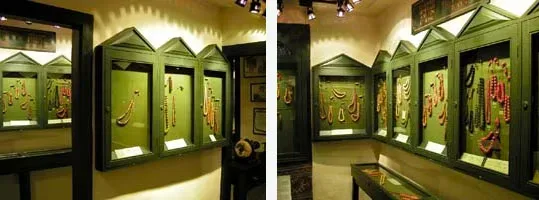
All the kombolois produced in the Museum Workshop can be found in the Museum Shop, which is also situated on the ground floor.
The Museum operates under the auspices of the Greek Ministry of Culture.
The purpose and mission of Komboloi Museum is to pre-serve the traditional
Geographical Coordinates
Staikopoulou 25, Nafplio 211 00
- Google Map
- 37.56624397342452, 22.799022364517384
- 2752021618
For more information: Museum of Komboloi, e-mail: [email protected]
The Distillery Museum
The cover story
Just before the declaration of the Greek state as an independent one, in 1840, Ioannis Karonis opens up his own raki-shop in Nafplio.
After many phases and given his love for ouzo production, he finds himself equipped with two distillation flasks and ventures out to learn more about the secrets of distillation.
In 1869, his venture seems to materialize, since he establishes the distillery house entitled: KARONIS.
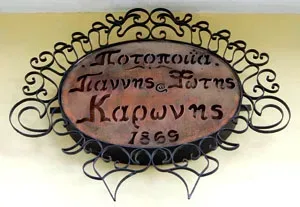
Pioneers, as they have always been, the two Karonis brothers settled their own unit of spirit production, using distilleries and machinery, far beyond the grasp of their time from Germany and France and built themselves a state of the art factory.
Craftsmen from Italy set up a number of built reservoirs and alembics. The spirit was used for the distillation and the production of ouzo and mastic. It was then that the whole operation took the name “Spirit House”, Tegea.
Production grows and the distribution stretches outside the city limits. Now, the products are being transported by boats and by train. In 1947, the firm follows the purchase of its own truck, which widens the distribution points even more.
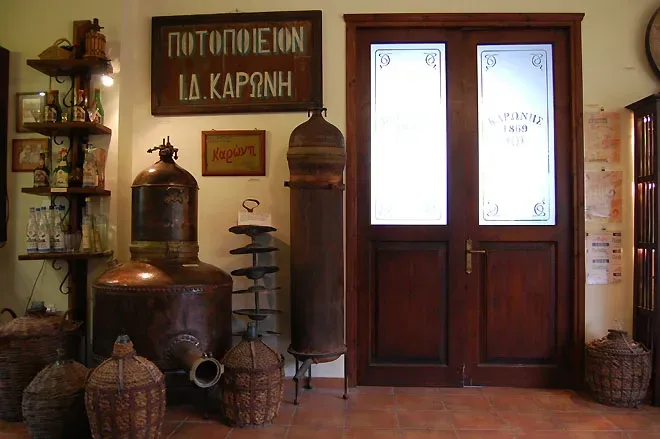
The distinctions did not take long to come in a presentation in Zappeion-1889.
The next distinctions appeared in Thessaloniki International Fair, where he received golden and silver medals as an appreciation and acknowledgement of his distilleries.
I.Karonis obsession with fulfilling optimum quality of his products led to the usage of top level aniseed and other, miscellaneous flavors, offering thus the unique as well as invaluable recipe of Karonis ouzo, which remains unchangeable till today.
Instilled with the same passion for perfection and the artistry overwhelming, the 5th generation of the Karonis family is pleased to continue the family’s tradition, offering optimum level quality of our spirits; a tradition initiated by Ioannis Karonis himself one and a half centuries ago.
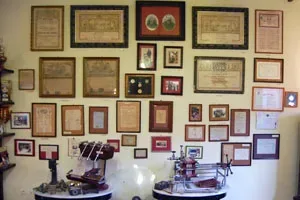
The Distillery Museum proudly presents tools, machinery and filed documents of the distillery house dated back from the 1880’s. Take a close look at the very first distillery flask and the market invoice from France…and many more.
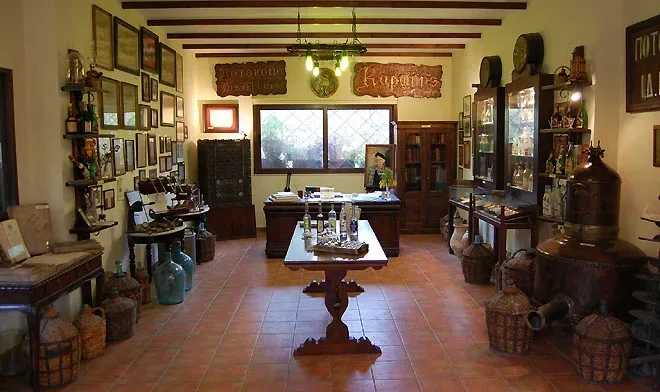
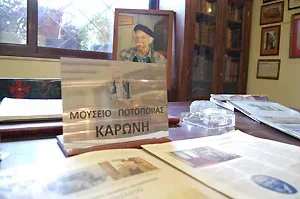
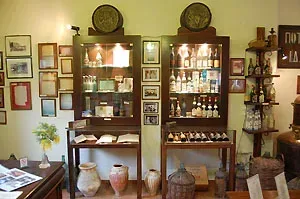
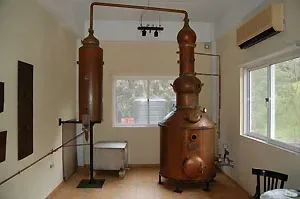

Live the experience of History first hand!!
To better organize any group visit, do not hesitate to contact us on: 27520-24968.
There will also be a guided tour in English, French, German, Italian, and Spanish should such a request arise.
Geographical Coordinates
9 Euclidis, Agia Paraskevi, Nafplio 211 00
- Google Map
- 37.564296159768844, 22.81789532681957
- 2752024968
For more information: Karoni Distillery Museum, e-mail: [email protected]
Motor Vehicle Museum
A non profitable organization, the MVM (Motor Vehicle Museum) is the long awaited and long desired result of passionate collectors through an orchestrated attempt to materialize a dream.
Through the Vintage Car Exhibition, the Greek Federation of Vintage Vehicle (Greek Acronym: E.O.O.E) wishes to present and revive the cultural and industrial heritage of the place. The cars are of Greek or other manufacturing origin. The goal of the exhibition is a full observation-understanding of the developmental stages that the car has undergone in conjunction with the socioeconomic factors that have led to that development.

Apart from the exhibition’s educational nature, each exhibit is a stimulus for memory recollection and remembrance, for instance, towards those who have actually lived the era of motorization, to those identifying the objects of exhibition with Greek or foreign filming and last but not least, to those who share the same passion and love for vintage cars.
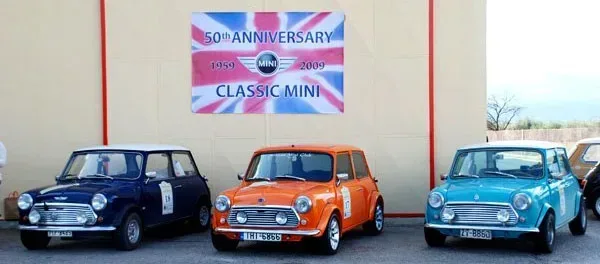
The Museum’s hall welcomes each and every one to familiarize with the rarity and high level of vintage car preservation, which do function perfectly, despite their “old” age. What’s more, the Museum holds a special unit-library with books, audio-visual material, all related to the car.
One of the MVM’s activities is the annual meeting of the Regularity Rally on historic cars and motorbikes, a beauty car contest “Concours d’ Elegance” and a spare part bazaar for vintage cars.
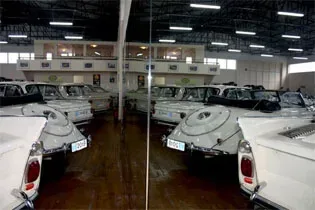
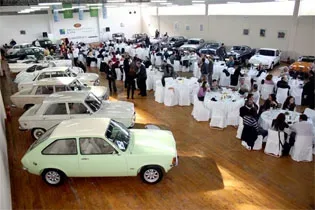
The Museum is open exclusively on request.
To arrange your private visit, please book a specific date in advance. This can be done either by e-mail or by telephone.
Tel: 2102116583 – E-mail: [email protected]
Geographical Coordinates
Headquarters – Showroom. G. S. Tyrinthas, Nea Tyrintha, Nafplio
- Google Map
- 37.596829044216356, 22.79980254807518
- 2102116583
For more information: Nafplio Motor Museum
Ecclesiastical Museum
The Ecclesiastical Museum of Sacred Temple “EVANGELISTRIAS” Nafplio, houses the collection of ecclesiastical objects and located on the south side of the church, a hall, where together with the chapel of St.Fanourios, a single room and operate as Ecclesiastical Museum.

The bulk of the project dates back to the 18th and 19th century. The icons represent the core of the museum’s collection and simultaneously the most important and largest part of and representing each category.
There are icons iconostasis ( despotic , Marian Dodekaorton , Saints ) , adoration ( destined for the wall or for special shrine ) and images of various sizes for private devotional use. The collection also includes a carved 16th century Cross.
As regards the argyroglyptikis there are a number of gilt sacred vessels, candlesticks , etc..
In the field of weaving are beautifully embroidered with gold, covers for cups .
There is also a collection of liturgical books ( Gospels , month , etc. ) most of which have been printed in Venice in known printers of the 18th century.
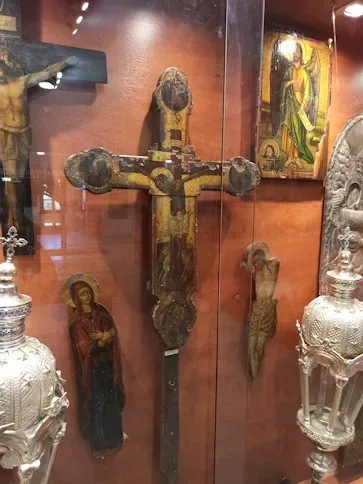
n terms of themes images covering the gamut of orthodox doctrinal hierarchy.
There is considerable variation conventional figurative types of Christ, the Virgin, and many Sts, which correspond to the almanac and Agiologio the Church, but also the needs of veneration and functional use.
Of interest are the dedicatory inscriptions with the names of the tributes and sponsors.
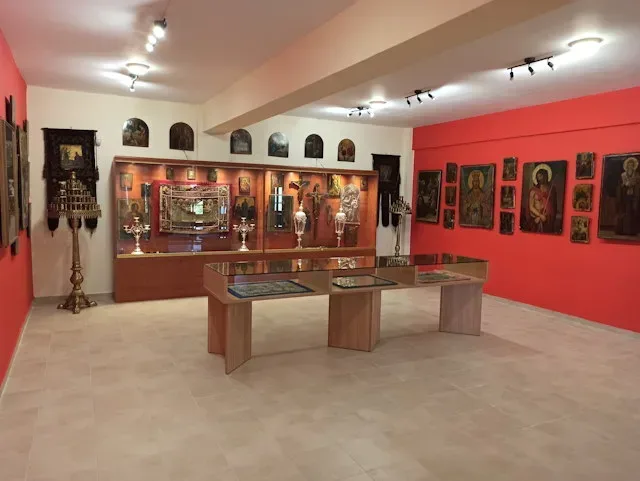
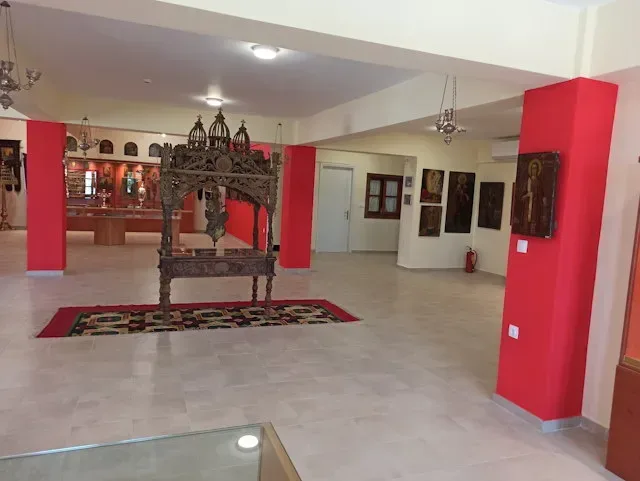
The following exhibits come from the cemeteries of the chamber tombs of Evaggelistria of Nafplio, Assinia, Dendron, Old Epidaurus and the vaulted tomb of Kazarma.
Stone, metal and clay vessels, ivory figurines, seal stones and jewellery made of gold, semi-precious stones, electrum, faience and glass illuminate the burial practices and reflect the stratification of Mycenaean society.
The amphoroidal craters with representations of a chariot and a guitarist respectively and the basket – a brook with a goat from Evaggelistria of Nafplio stand out.
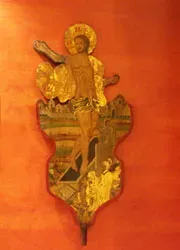
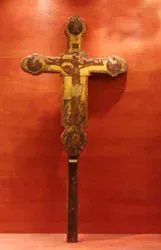
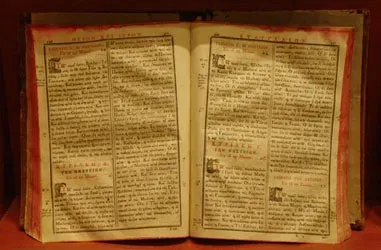
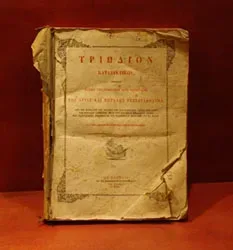
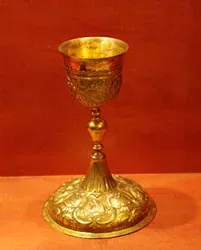
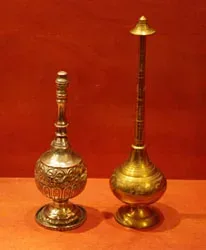
The Ecclesiastical Museum is under the direct supervision of the Holy Church “EVANGELISTRY”.
The exhibits cover the period from the 16th to the 20th century and are witnesses of the post-Byzantine ecclesiastical art of the region.
The aim of the museum is to collect, preserve, conserve, exhibit and display all kinds of objects that showcase the ecclesiastical art of the church.
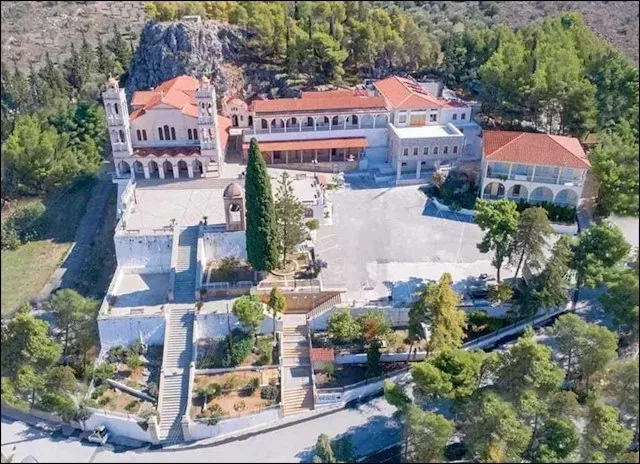
Museum opening hours
Visits to the museum are scheduled upon request.
To arrange your private visit you will need to book a specific date and time in advance by calling 27520 27778.
Geographical Coordinates
Evangelistria Hill, Nafplio Providence, 211 00 Nafplio
- Google Map
- 37.56383268013815, 22.812670620309362
- 2752027778
More information about the museum and the Holy Church of Evangelistria can be found on the website: evagelistrianafpliou.blogspot.com